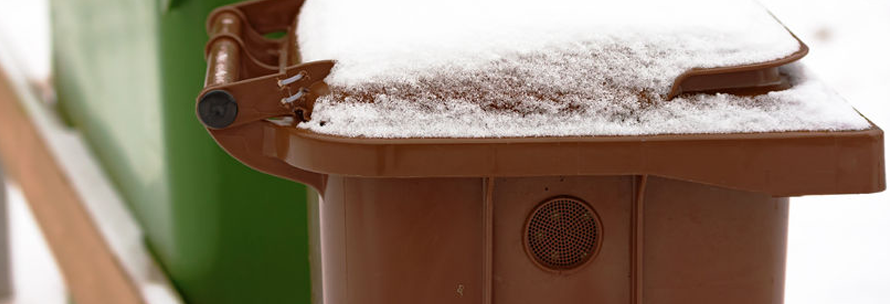The Mysterious Brown Bin: Why Don’t We All Have One?

As recycling has become a part of everyday life, having two different coloured bins no longer causes confusion. However, for a few, there is a third brown bin. One that not many people seem to speak of or know about. You have the choice to opt-in for this extra bin, to help further organise your domestic waste. And you don’t just have to stick to just one.
Why a BROWN bin?
As the colour suggests, the brown bin is specifically for the collection of garden waste and is a great way to ensure more of your waste avoids the landfill. This is collected and composted before being available to buy and be used by other householders as well as in agriculture.
Although this doesn’t necessarily mean that anything compostable is suitable for the bin. If you have significant amounts of grass cuttings, shrub clippings, leaves, plants and weeds, cut flowers or small quantities of windfall fruits, then a brown bin is definitely something to consider. However, remember to keep out kitchen waste, anything plastic, animal waste, soil, stones, bricks, rubble and branches or tree stumps over 4 inches (7.5cm) in diameter, as these are just not suitable.
How much does it cost?
Working out at an average of around £1 per week, this is perfect for green-fingered folk. But, with the price varying from county to county, it is important to check out your local authorities’ website to get accurate subscription prices. Once you receive your brown bin, you will then be informed of your collection day and week. As not everyone has this type of bin, it is important to make sure yours is visible in order to be collected.
How often is a brown bin collected?
The 240-litre container is collected fortnightly throughout the year – between Tuesday and Friday – from 7 am onwards. But with inclement weather collections may be suspended to allow other arrangements to be made for general waste and recycling.
With this home collection service in place, it means that after you put your garden waste in the bin, your work is done. There is no need to take a trip to the tip or mess up your car. Plus, without the additional drive, you carbon footprint is sure to decrease, making you even more eco-friendly. It’s a win-win!
Anything else I need to know?
If your brown bin has not been emptied, it will receive a tag explaining the reason and what to do next. Also, it is important to be mindful of the weight of your bin and try not to overfill it. The local authorities reserve the right not to collect a bin if they see it as liable to cause damage to either the crew or the bin itself.
Also, as these brown bins are purchased; it is the responsibility of the owner. If it is lost or stolen, the local authorities will not replace it. Also, as this service is supplied by the local authorities, the fee is reviewed annually. Usually lasting from 1st April to 31st March – and may increase.
I won’t fill a ENTIRE bin!
For some of you reading, you may be thinking ‘I can’t get one of these bins.’ But, don’t fret. There is another option as garden sacks may be available to buy. However, these are collected alongside the grey/black bins/sacks, unfortunately means that this garden waste is sent to the landfill.
So there you have it, everything you need to know about the infamous brown bin. If you think you might be interested in one, check your local authorities’ website for more information. Or, you could even purchase your own outdoor bin to create and store compost at home! If you have enjoyed this check out other helpful tips on our blog.










